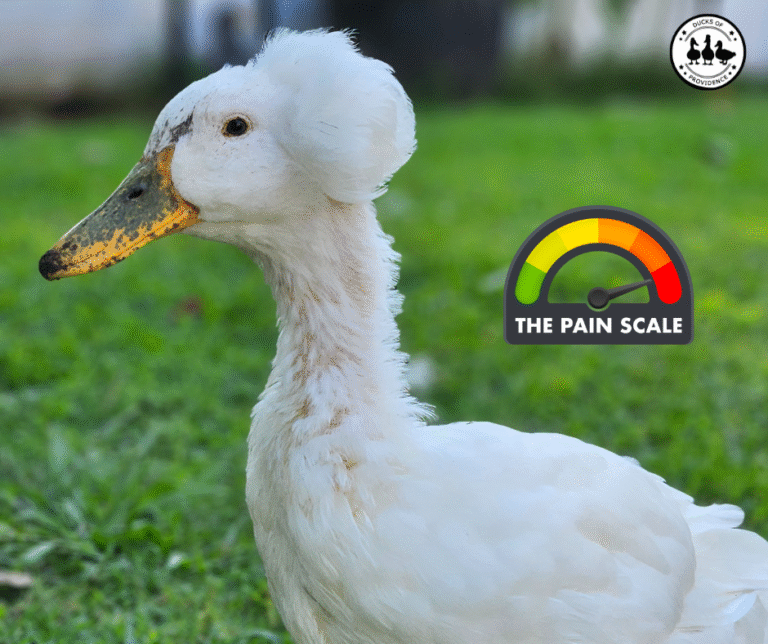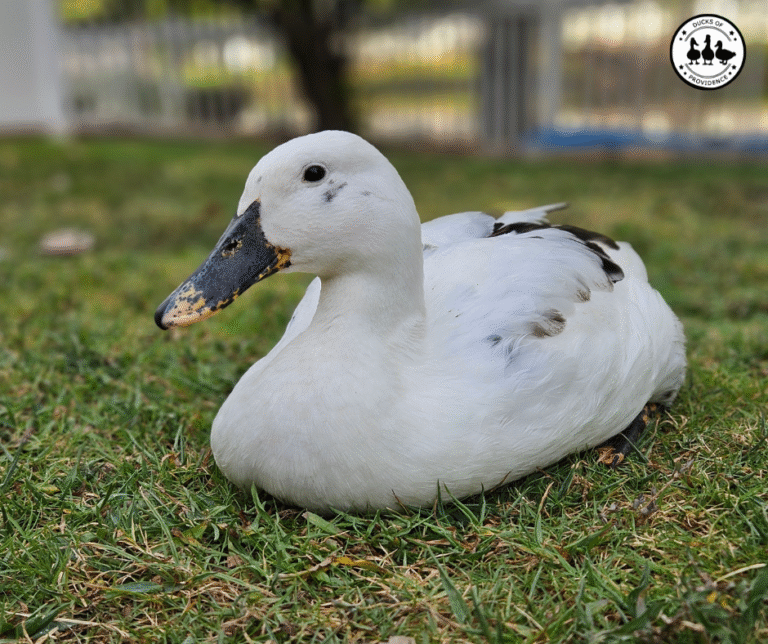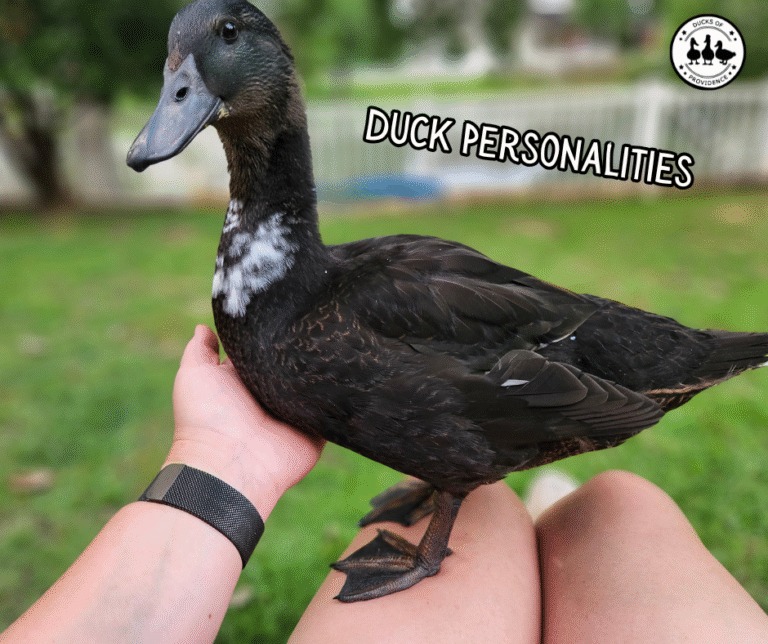
Call Ducks: Tiny Ducks with Big Personalitys
If you’re looking for a small, charming duck breed that’s full of character, Call Ducks might be the perfect addition to your backyard flock. Known for their adorable round bodies, short bills, and famously loud quacks, Call Ducks are one of the most popular bantam duck breeds among pet owners and poultry enthusiasts alike.
In this comprehensive breed profile, we’ll cover everything you need to know about Call Ducks—from their history and appearance to their unique care needs and suitability as pets. Whether you’re a first-time duck owner or a seasoned keeper looking to add variety to your flock, this guide will help you decide if the Call Duck is the right fit for you.
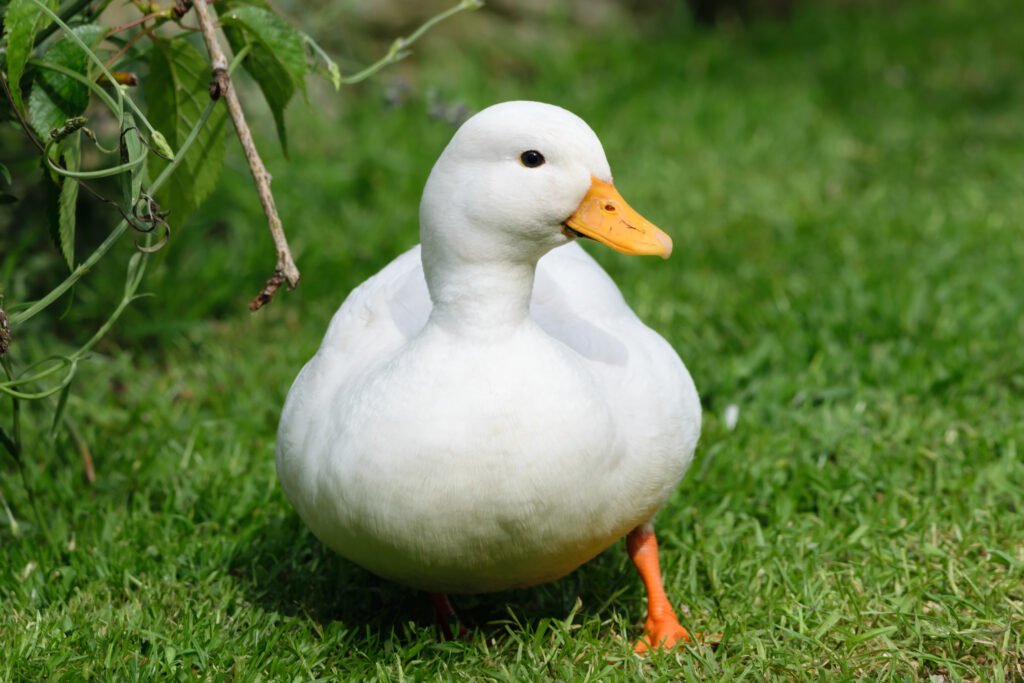
Ducks of Providence is free, thanks to reader support! Ads and affiliate links help us cover costs—if you shop through our links, we may earn a small commission at no extra cost to you. Thanks for helping keep our content free and our ducks happy! 🦆 Learn more
Breed Overview
| Trait | Call Duck |
|---|---|
| Size | Bantam |
| Weight | Males: ~1.5–2 lbs (680–900 g) Females: ~1.25–1.5 lbs (570–680 g) |
| Lifespan | 7–10 years with good care |
| Origin | Likely Netherlands (possibly with Asian influence) |
| Recognized by APA | Yes (since 1874 – Gray and White varieties first) |
| Color Varieties | Gray (Mallard), White, Snowy, Black, Blue Fawn, Pastel, Chocolate, and more |
| Egg Production | 100–150 small eggs per year |
| Egg Color | White or off-white |
| Broodiness | Often broody; known to be excellent mothers |
| Temperament | Social, curious, lively, very vocal |
| Noise Level | Extremely loud—especially hens |
| Flying Ability | Can fly short distances; wings often clipped in backyard settings |
| Cold Hardiness | Fair to moderate; needs protection in harsh winters due to small size |
| Heat Tolerance | Moderate; needs access to shade and water |
| Special Care Needs | Predator-proofing is crucial; monitor bill shape and leg health |
| Good for Beginners? | Yes, if noise isn’t a problem |
| Best Suited For | Pets, ornamental flocks, exhibitions |
History and Origins of Call Ducks
Call Ducks may be tiny in size, but they come with a fascinating and somewhat mysterious history. Their exact origins are still debated, but many historians believe they were first bred in the Netherlands several centuries ago. Early records suggest that similar small ducks were kept by hunters, not for their eggs or meat, but for their voices.
In fact, the name “Call Duck” comes from their original purpose—these ducks were used as live decoys. Hunters would place them near wild duck feeding areas or waterways. Thanks to the females’ loud, persistent calls, they could lure wild ducks closer, making it easier for hunters to trap or shoot them. This practice was especially common in the Netherlands and later spread to the British Isles.
Some sources also speculate that small ducks resembling Call Ducks may have originated in East Asia and were brought to Europe through trade routes, possibly contributing to the breed’s development.
By the 1800s, Call Ducks had made their way to the United Kingdom, where they became popular among ornamental poultry breeders. Their charming appearance and chatty personalities made them instant favorites at exhibitions. In 1874, the American Poultry Association officially recognized the Gray and White varieties in its first Standard of Perfection.
Today, Call Ducks are kept primarily as pets and show birds rather than hunting aids. Their popularity has soared thanks to their adorable looks, compact size, and social nature—but their voice still pays tribute to the breed’s unique working past.
Appearance and Color Varieties of Call Ducks
Call Ducks are beloved for their irresistibly cute appearance. With their petite, rounded bodies, short necks, and baby-like faces, they look almost like plush toys come to life. Their bills are noticeably shorter and stubbier than those of standard-sized ducks—a result of generations of selective breeding. This contributes to their signature “doll-like” look, but it also means that some breeding lines may experience challenges related to bill shape and fertility.
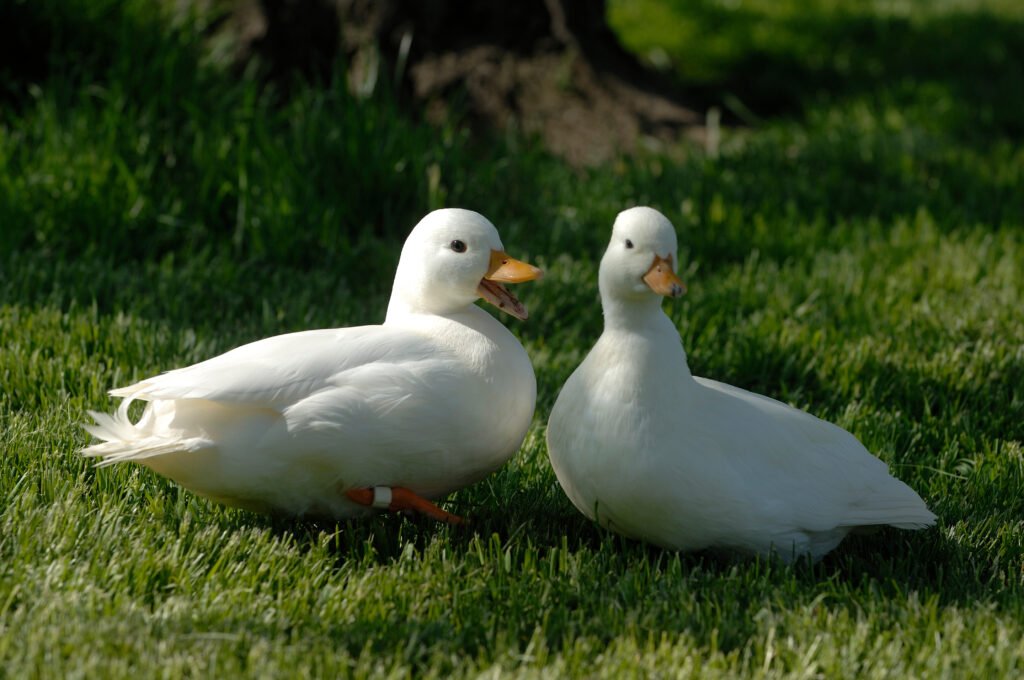
Despite their small size, Call Ducks have a confident, upright posture and walk with a bit of a bounce, adding to their charm. Their compact build makes them appear almost spherical when viewed from above or behind—especially when they fluff up their feathers or waddle quickly across the yard.
Size, Weight, and Posture —and Flight!
Call Ducks are classified as bantams, and their small size is one of their most defining traits:
- Females: typically weigh between 1.25–1.5 lbs (570–680 g)
- Males: slightly larger, around 1.5–2 lbs (680–900 g)
They stand with a distinctly upright posture, giving them an alert and confident look. Their short legs contribute to a waddle that’s even more exaggerated than in larger duck breeds, and when they fluff their feathers, they can appear almost spherical from certain angles.
Their heads are large in proportion to their bodies, and their bills are short, wide, and slightly upturned. This short bill trait has been exaggerated through selective breeding and is part of what gives them their signature baby-faced appearance—but it can sometimes lead to fertility issues or difficulties in feeding if not carefully managed.
Despite their round shape, Call Ducks are excellent flyers. Their lightweight bodies and strong wing-to-weight ratio allow them to fly far and high—much more so than most domestic duck breeds. It’s not unusual for an uncontained Call Duck to fly over fences or even disappear entirely if startled. For this reason, many pet owners opt to clip one wing, keep them in enclosed aviaries, or provide a covered run to prevent flyaways and protect them from predators.
Color Varieties in Call Ducks
Call Ducks are one of the most color-diverse domestic duck breeds. Thanks to their popularity in exhibition circles and decades of dedicated breeding, they’re now available in a stunning range of colors and patterns. Some are recognized by poultry associations like the APA and the British Waterfowl Association, while others are still considered rare or project colors.
Because Call Ducks are small and ornamental, color breeding has become a specialty hobby. However, not all colors breed true, and some may come with genetic trade-offs, such as lower fertility or increased risk of deformities—particularly when line breeding is overused. Below is a breakdown of popular, recognized, and rare varieties.
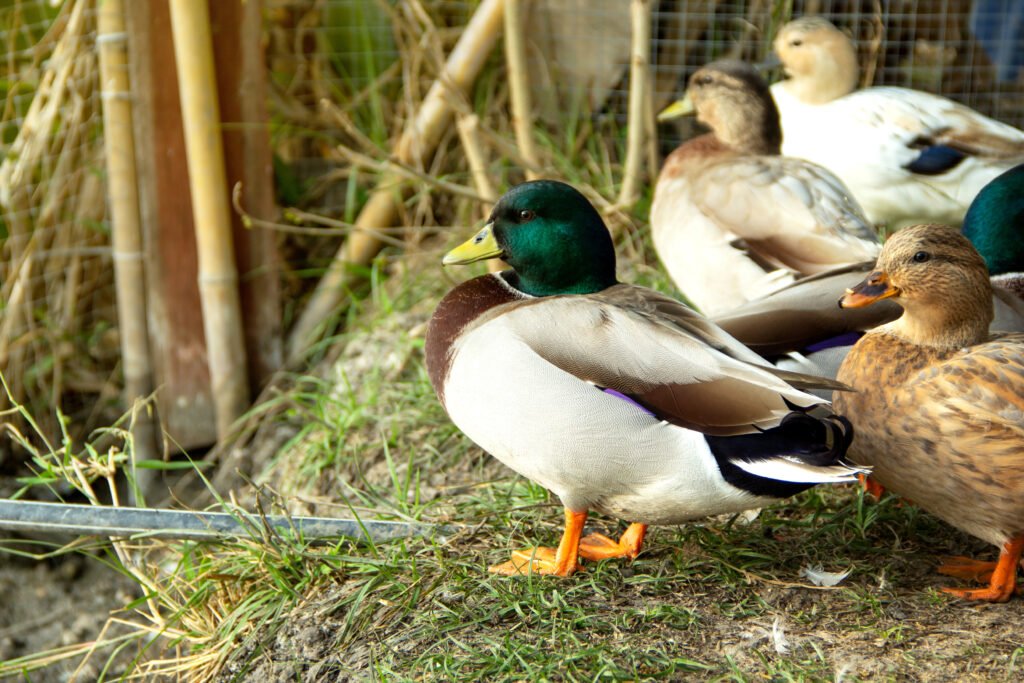
APA-Recognized Call Duck Colors (U.S.)
These varieties are officially recognized by the American Poultry Association and are commonly seen at poultry shows in North America:
| Color | Description |
|---|---|
| Gray (Mallard) | Classic coloring—drakes resemble wild Mallards with green heads, chestnut breasts, gray bodies; hens are mottled brown with blue wing speculum |
| White | Pure white plumage; orange bills and legs; striking but prone to staining in muddy environments |
| Black | Solid black plumage with a glossy green sheen; black bill and feet |
| Blue Fawn | Males have blue-gray backs and warm tan chests; females are a soft beige with light gray accents |
| Snowy | Tricolor pattern of white, blue, and fawn; complex to breed and does not always produce true offspring |
| Butterscotch | Warm creamy buff tone with light chocolate markings; soft and subtle; common in pet circles |
Other Common and Exhibition Varieties
These varieties are not always APA-recognized in the U.S. but are very popular among breeders and hobbyists, especially in the UK and Europe:
| Color | Description |
|---|---|
| Pastel | Light gray and fawn tones; soft, muted version of Blue Fawn |
| Chocolate | Rich brown all over; males and females look very similar |
| Silver | Very light gray, almost white; elegant but prone to feather faults |
| Khaki | Uniform dusty tan-brown color; similar to the Khaki Campbell duck |
| Buff | Warm golden tan with orange feet and legs |
| Apricot | Soft creamy peach tones; similar to Butterscotch but lighter |
| Magpie | White body with patches of black or blue on the back and head |
| Pied | Irregular patches of two or more colors, often including white |
| Cinnamon | Reddish brown shades with lighter bellies; uncommon in the U.S. |
| Crele | A barred, multicolored pattern with speckled plumage—very rare |
Color Genetics and Breeding Notes
- Breeding true: Not all Call Duck colors breed true. For example, Snowy x Snowy pairings often produce a mix of Snowy, Blue Fawn, and Gray offspring. Blue dilution genes (like in Blue Fawn) require careful planning, as Blue x Blue can yield splash or very light colors.
- Sex-linked traits: Some varieties like Buff may involve sex-linked genes, complicating breeding outcomes.
- Bill color inheritance: Some colors, such as Chocolate and Silver, affect not only plumage but also bill and leg coloration.
- Line-breeding risks: Overuse of tight line breeding to enhance color can result in fertility issues, weak bills, or leg deformities.
Because of their small size and ornamental value, Call Ducks are frequently bred for show, where feather quality and color clarity are essential. However, it’s important to balance appearance with health and functionality. For example, overly short bills can lead to breeding challenges, and extreme size reduction may increase vulnerability to cold or injury.

If you’re looking to add a Call Duck to your flock, our friends at Metzer Farms offer several of these beautiful varieties. They currently sell Black, Blue, Gray (Mallard), Pastel, Penciled, Snowy, and White Call Ducklings, all available as unsexed ducklings. We always recommend sourcing from reputable hatcheries like Metzer, especially when you’re looking for healthy birds with well-maintained breed standards. Be sure to plan ahead—Call Ducks are in high demand, and some colors sell out quickly each season!
Temperament and Behavior
Call Ducks are as lively and lovable as they look. Despite their small size, they have big personalities and are often the center of attention in any flock. Their temperament makes them a popular choice for pet owners, especially those who enjoy spending time interacting with their ducks.
Vocal and Social
The most defining behavioral trait of Call Ducks is their voice. Hens, in particular, are famously loud and talkative. Their name originates from this trait—they were originally used to “call in” wild ducks due to their high-pitched, persistent quacking. If you’re looking for a quiet backyard bird, Call Ducks aren’t the right choice. But if you enjoy a chatty companion and don’t mind a little noise, their constant communication can be endearing.
These ducks are extremely social. They bond closely with each other and with their humans. A single Call Duck may become lonely or stressed without a companion, so it’s best to keep them in pairs or small groups. They tend to be more outgoing than some of the larger duck breeds, often coming up to people for treats or attention—especially if they were handled frequently from a young age.
Energetic and Curious
Call Ducks are quite active for their size. They love exploring, dabbling in shallow water, foraging through the grass, or playing with enrichment toys. Their small bodies make them quick and agile, though their short legs give them a bit of a waddle.
Because of their energy levels, they benefit from plenty of space and stimulation—even if it’s just a safe, fenced backyard with access to grass, shallow water, and a few hiding spots or low platforms. They’re naturally curious and enjoy inspecting new objects or investigating changes to their environment.
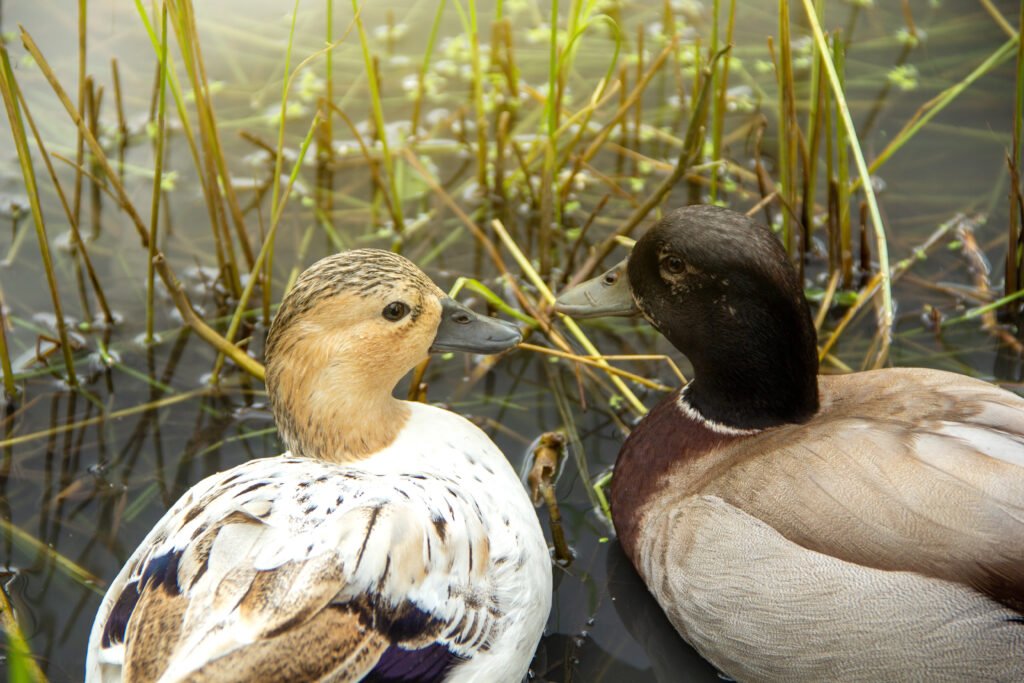
Handling and Human Interaction
When raised with care and gentle handling, Call Ducks can become wonderfully tame. Many owners describe them as affectionate, especially when treats are involved. They can learn routines, recognize their names or certain phrases, and may even follow you around like tiny feathered shadows.
That said, they’re still prey animals at heart. Sudden movements, loud noises, or unfamiliar environments can startle them. Because of their small size, children should always be supervised when interacting with Call Ducks to prevent accidental injury or stress.
Egg Production and Reproductive Traits
Call Ducks aren’t the most prolific layers among domestic ducks, but they do produce a respectable number of eggs for their size—and their excellent mothering skills more than make up for their smaller output.
Egg Quantity and Size
Call Duck hens typically lay around 100 to 150 eggs per year. The eggs are small—about half the size of a standard duck egg—and usually white or off-white in color. Because of their petite build, Call Ducks mature a bit later than larger breeds, and their egg-laying can be more seasonal, often starting in spring and tapering off in the hotter summer or colder winter months.
Their small eggs are perfectly edible, with a rich yolk and creamy texture. Some backyard duck keepers use them for baking or novelty treats, though most don’t raise Calls for egg production alone.
Broodiness and Hatching
One of the Call Duck’s standout traits is their tendency to go broody—and when they do, they’re often very determined and excellent mothers. Call Duck hens can successfully hatch and raise their own ducklings, despite their tiny size. In fact, some keepers use them as broodies to hatch the eggs of other bantam ducks or even small chicken breeds.
That said, because of their small frame, they can only incubate a handful of eggs at a time (usually 6–8 max), and any nest should be well-protected from predators or other flock members.

by Jason via Adobe Stock
Reproductive Challenges
Call Ducks are often bred for show, and decades of selective breeding—especially for features like ultra-short bills—have created some reproductive challenges. Fertility rates can be lower in some lines, and natural mating can be difficult, particularly if a drake’s bill or size makes it hard for him to successfully court and mount the hen.
As a result, experienced breeders sometimes rely on artificial insemination (AI) to achieve successful pairings, especially when working with rare color varieties or show-quality birds.
Additionally, due to their size, hens may be at greater risk of injury if paired with larger drakes. It’s important to keep mating size-compatible and always supervise new pairs during breeding season.
Hardiness and Special Care Considerations
Call Ducks may be tiny, but they’re hardy when cared for properly. Their bantam size does come with some unique needs, but with a few thoughtful adjustments, they do well in a variety of backyard or aviary setups.
Cold Hardiness
Due to their small body mass and lower fat reserves, Call Ducks are not as cold-tolerant as larger breeds. In colder climates, they need extra protection during winter months:
- A dry, insulated duck house with deep bedding (like straw or pine shavings)
- Wind blocks and draft protection, especially around entry points
- Access to unfrozen water at all times (heated bowls may be necessary)
- Higher-calorie treats like mealworms or oats during cold spells to help maintain energy
Their feet are also more susceptible to frostbite, so avoid wire flooring or constantly wet ground in winter.
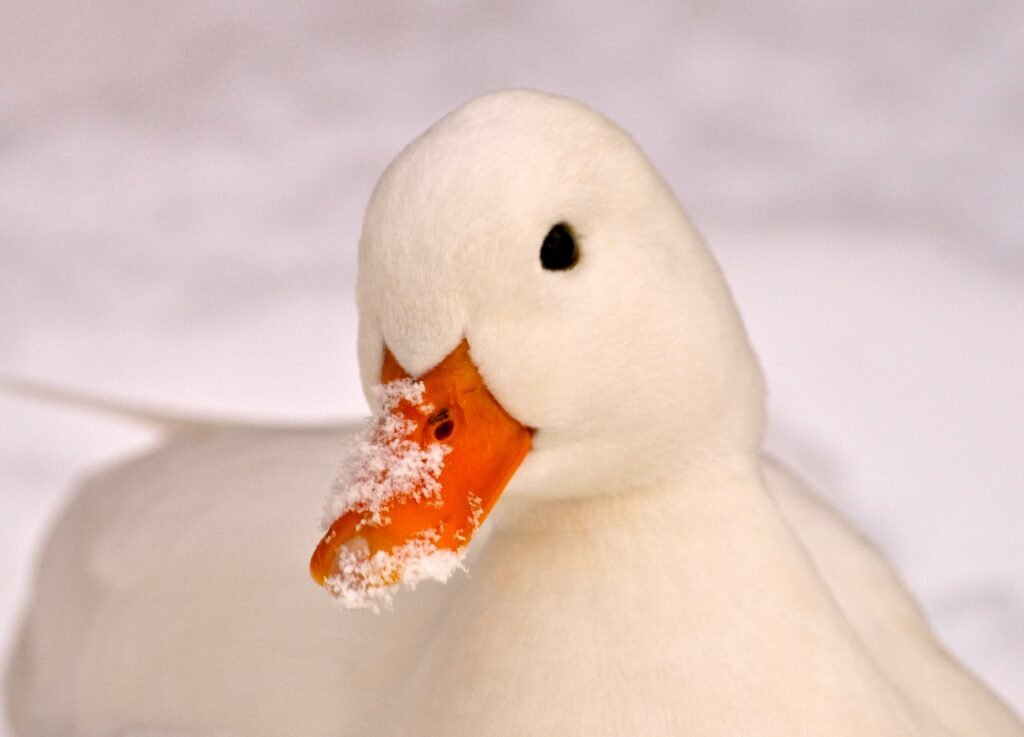
by Dawn via Adobe Stock
Heat Tolerance
Call Ducks generally handle heat well, but like all ducks, they must have:
- Plenty of cool, clean water to bathe in and drink
- Shade from trees, tarps, or shelters
- A well-ventilated house that doesn’t trap heat
Their smaller size helps them cool off quickly in water, but on very hot days, watch for panting, lethargy, or holding wings away from their body—signs they’re overheating.
Foot and Bill Health
Unlike heavier duck breeds, Call Ducks are less prone to bumblefoot. Their light weight puts minimal pressure on their feet, making them more tolerant of harder surfaces like pea gravel. Many Call Duck owners successfully use pea pebbles or small gravel in aviary setups because it’s low-maintenance and drains well.
That said, a mix of soft and firm surfaces is ideal—especially foraging areas with grass or mulch where they can dabble and root comfortably.
As for bills, their short, wide shape is part of what gives them their signature look. But in some lines, it’s exaggerated to the point that it may interfere with natural mating or efficient preening and foraging. Be sure to observe eating habits and feather condition regularly, especially during molt.
Housing and Predator Protection
Call Ducks may be small, but they require secure, thoughtfully designed housing to stay safe and healthy—especially since they’re excellent flyers and highly vulnerable to predators.
Their duck house should be fully enclosed, with a low ramp or entry suited to their short legs. Bedding needs to stay dry and clean to prevent chilling, especially in winter, and the structure should offer draft protection without sacrificing ventilation. At night, always lock them in securely to guard against common threats like raccoons, snakes, rats, and opossums.

by GWells via Adobe Stock.
Because of their size, even domestic pets such as cats and dogs can be dangerous, and aerial predators like hawks and owls are a major concern. A covered run or fully enclosed aviary is strongly recommended to prevent attacks from above—and to stop your ducks from flying away. Hardware cloth (½-inch or ¼-inch) is much more secure than chicken wire and should be used on all sides, including the roof and base of your setup if you’re in an area with digging predators.
Call Ducks don’t require as much space as larger breeds, but they’re active and curious. Whenever possible, provide access to a yard, garden, or enriching outdoor area where they can forage, explore, and stay mentally stimulated—all within safe boundaries.
Flight Management
Don’t let their round shape fool you—Call Ducks are excellent flyers. Their low body weight and strong wings make it easy for them to lift off and clear fences, especially if startled. If your run or yard isn’t completely enclosed, you’ll want to:
- Clip one wing (not painful when done correctly)
- Use a covered aviary or netted top
- Avoid startling them with loud noises or fast movements
Even well-bonded ducks might fly off during storms, fireworks, or predator scares—so it’s best not to take chances.
Special Considerations for Pet Owners
Call Ducks make delightful pets, but they’re not your average backyard duck. Their small size, big voices, and close bond with humans make them both endearing and a bit high-maintenance. If you’re considering adding Call Ducks to your family, here are a few things to keep in mind to ensure they thrive in a pet setting.
Bonding and Companionship
Call Ducks are incredibly social birds and do best when kept in pairs or small flocks. A single duck will quickly become lonely, anxious, and even depressed without company—duck or human. If raised with regular handling, they can form strong bonds with their owners and may follow you around the yard, respond to your voice, or even sit in your lap.
Because of their small size, they’re especially vulnerable to injury from rough handling or overly enthusiastic children. While they can be wonderful pets for families, young children should always be supervised during interactions.
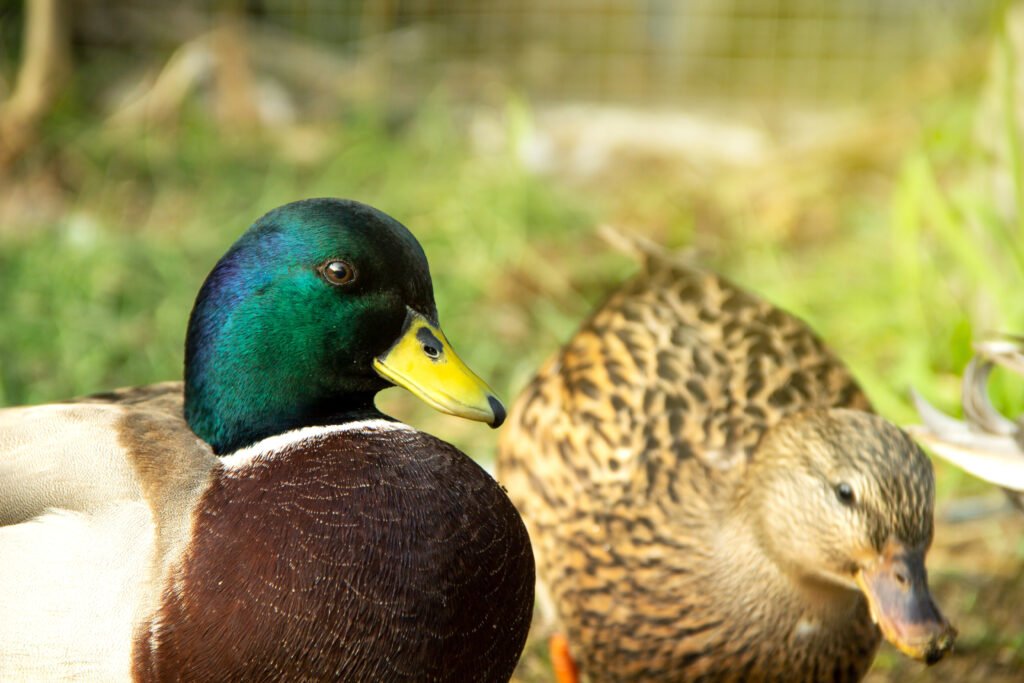
Cleanliness and Indoor Living
While their size and temperament might tempt some people to keep Call Ducks indoors, it’s important to remember that they are still waterfowl—and waterfowl are messy. They need access to open water to clean their eyes and bills, and they poop frequently, which makes long-term indoor housing challenging.
Some pet owners use duck diapers for short indoor visits or special needs birds, but these are not a substitute for proper outdoor housing. Even house-kept ducks need safe, supervised outdoor time every day for fresh air, foraging, and natural behaviors.
Flight and Safety
Call Ducks are among the few domestic duck breeds that are truly capable flyers. It’s not uncommon for a startled or curious Call Duck to fly over a backyard fence and disappear—sometimes for good. If you plan to keep them as pets in an open space, a covered run or clipped wing is a must to prevent accidental escapes.
They’re also very small and quiet when they’re not calling, which makes them easy for predators to snatch—even in suburban or fenced-in yards. Never leave them unattended outside without protective fencing or supervision.
Attention to Diet
Pet ducks, especially those that are pampered with lots of treats, are at risk of becoming overweight. Call Ducks are already compact, so even a little extra weight can lead to joint strain or decreased activity. Stick to a balanced waterfowl-maintenance feed, like Mazuri, and keep treats like peas, oats, and mealworms to a minimum.
Vet Care and Long-Term Commitment
Because of their small size and unique breeding traits, Call Ducks may be more prone to certain reproductive or bill-related issues. Make sure you have access to a vet who sees waterfowl, and be prepared for occasional hands-on care—especially during molt or if illness arises.
Call Ducks can live 7 to 10 years or more with good care. They’re not seasonal or short-term pets—they require the same level of commitment and responsibility as any other companion animal.

Final Thoughts
Call Ducks may be the smallest domestic duck breed, but they bring an enormous amount of joy, personality, and charm to any flock. Whether you’re drawn to their cartoonish good looks, their sociable nature, or their wide range of beautiful colors, it’s easy to see why so many duck keepers fall in love with them.
That said, they’re not the right fit for every situation. Their loud voices, strong flying ability, and extra need for secure housing mean they require a little more planning than larger, quieter breeds. But for those who are prepared to meet their needs, Call Ducks make fantastic pets, show birds, and backyard companions.
We’ve loved getting to know this breed over the years and hope this profile helps you decide whether the Call Duck is a good match for your flock—or your family. With the right care, they’ll return your effort tenfold with affection, entertainment, and more than a few loud conversations.
Other Breeds
- Cayuga Ducks: The Beautiful Black Duck Breed
- Ancona Duck – A Rare Duck Breed
- Muscovy Ducks: The Gentle Giants of the Duck World
- Welsh Harlequin Duck – Friendly, Hardy, and Stunningly Unique
- Khaki Campbell: The Champion Egg Layer That Can (Almost) Fly
- Crested Ducks: Pets with a Genetic Defect
- Indian Runner Ducks: The Upright, Active, and Entertaining Breed
- Pekin Ducks: The Classic Backyard Companion
- Silver Appleyard Ducks: The Beautiful Heavyweight Champions of Egg Production
- Swedish Ducks: Calm, Hardy, and Strikingly Beautiful

